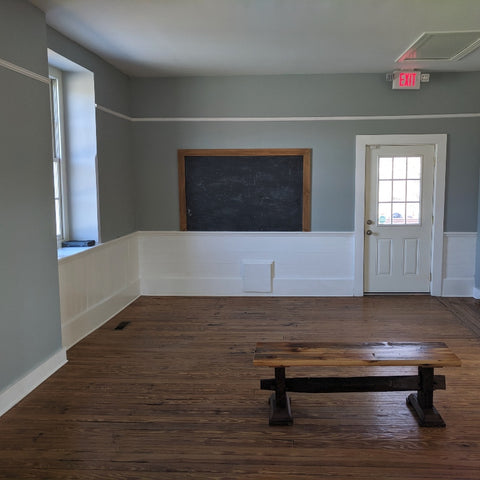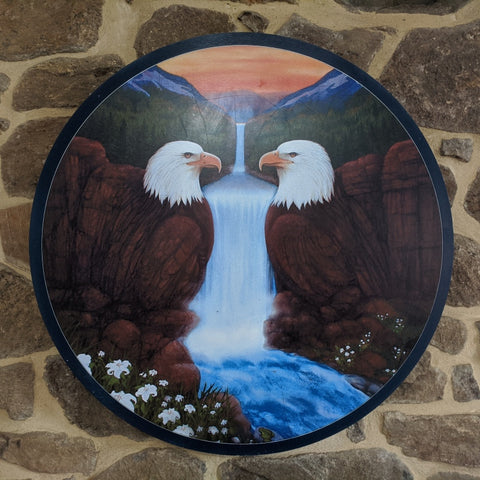School House History
There is evidence in West Pikeland Township of early human and Native American inhabitants, followed by European settlement in the 1700s. A Land Grant from William Penn, containing over 10,000 acres, was given to Joseph Pike, a merchant from Cork, Ireland, on December 3, 1705. In 1733, Joseph Pike’s sone, Richard Pike, inherited this tract of land, which he renamed “Newington”. However, soon after, the tract was once again called “Pikeland”. In 1838 these lands were divided and called East and West Pikeland. The area was inhabited by various tribes of Native Americans, mainly the Lenni Lenape, and later settled by the Swedes, English, Welsh and Germans. In 1838 the area was split into East and West Pikeland.
Following settlement, much of the land was cleared for crops and livestock. Agriculture became the dominant industry and gristmills were constructed along the streams to process the grain. One of the most important of these mills is the Mill at Anselma, built in 1747 on Pickering Creek.
The Township became an important travel destination following the discovery of sulfur springs. Valued for their medicinal properties, people came from all over to bathe in the spring’s mineral waters. “Yellow Springs” grew into a well-known summer resort. Yellow Springs was the site of a hospital during the Revolutionary War and was used to treat the wounded of the Battle of Brandywine and those that fell ill while at Valley Forge.
As the region continued to grow, iron and steel industry developed. In 1871, the Pickering Valley Branch of the Reading Railroad Company was constructed between Phoenixville and Byers. Dairy products and iron ore were the main products carried by this system. Commercial and industrial activity declined in the twentieth century and mining ceased along with the operation of the rail line. The strong agricultural tradition continued, and West Pikeland is still recognized for its contribution to regional agriculture.
Mill at Anselma (Lightfoot Mill/Collins Mill) – This building is listed on the National Register and is also designated a National Historic Landmark (nationally significant historic places designated by the Secretary of the Interior because they possess exceptional value or quality in illustrating or interpreting the heritage of the United States). “The combination grist and lumber mill was built in 1747 by Samuel Lightfoot. It is an excellent example of a mid-eighteenth century mill operation vital to the region’s agricultural and commercial growth. It is architecturally significant because of its early date and largely original condition” (source: National Register nomination form).
Anselma developed as a commercial center and at one point supported the County’s second largest creamery, as well as the gristmills, a general store and post office, the Franklin Hall School, and a train station. The grounds of the general store were well known as the location of tractor sales events held during the 1930s and 1940’s. The abandonment of the railroad led to the decline of the village and there is little left to give evidence to this once important commercial area. A gristmill and several key historic homes still stand in this area, and together they serve as important reminders of the Township’s historical development.
Opperman’s Corner - The northwest corner of the intersection of Routes 113 and 401 was the site of a general store dating from 1871. It was owned by David Opperman and was known as the first store in the vicinity to carry ice cream. It operated until 1959.

Franklin Hall Scool ~ In 1856, the school was known as Shennemans.
Conestoga Pike at Anselma
West Pikeland Township, Chester County, Pa.
Class of 1910-1911
Back row L to R: Clementine Moses, Ada Davis, Miss Emma, D. Trimble, teacher, Margaret Deery, Mae Davis, Jennie Thompson
Second row L to R: Mabel March. George Thompson, Frank Thomas, Summer Thomas, Martin Moses, Henry Shoffner, Ralph Miller, Ralph Thomas
Front row L to R: Samuel Thomas, Calvin Thomas, Walter Shoffner, Elizabeth March, Elizabeth Brownback, Katherine Brownback, Florence Gohean, Emma Brownback, Martha Thomas

~Original Black Board~

~Rope pull for School Bell~














